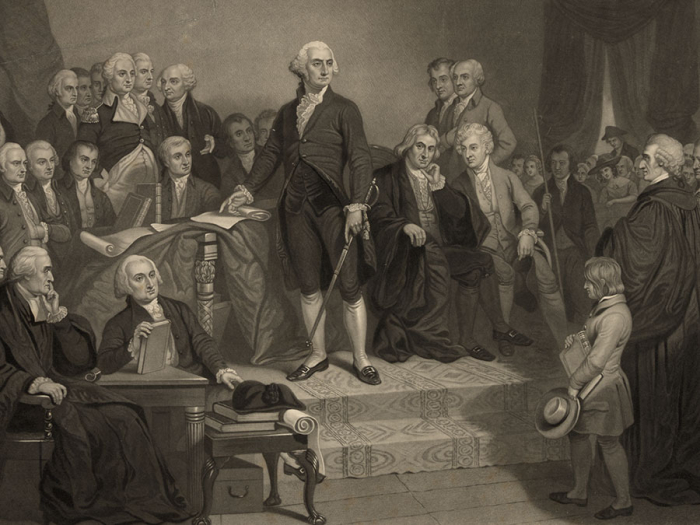In a word, no. This is not to say that young Washington was a Pinocchio. It’s just that there is no evidence that this event actually occurred. However, it’s the story behind the story that is the story here. When Washington died in 1799, Americans were well aware of his public accomplishments but knew little about his personal life, and they were keen to fill that void. Enter Mason Locke Weems, a clergyman and an itinerant book agent, who saw that need and was ready to meet it as one of Washington’s first biographers. A moralist as well as an opportunist, Parson Weems determined that he would show that Washington’s “unparalleled rise and elevation were due to his Great Virtues.” In the process, Weems created a prescriptive portrait of Washington as a role model for the fledgling country’s citizens.
Weems’s The Life and Memorable Actions of George Washington was first published in 1800, but his cut-from-whole-cloth anecdote about the cherry tree was not added until the book’s fifth edition, which hit the shelves in 1806. (By 1825 the book would be in its 29th edition.) Weems claimed that he had heard the story from an elderly friend of the Washington family, but there is no evidence to support his claim. Nevertheless, Weems confidently related how the value of honesty was firmly inculcated in Washington by his father:
‘Truth, George' (said he) ‘is the loveliest quality of youth. I would ride fifty miles, my son, to see the little boy whose heart is so honest, and his lips so pure, that we may depend on every word he says.’
When, according to Weems, a six-year-old Washington accidentally damaged his father’s beloved cherry tree with a new hatchet, the boy was driven by his conscience to own up to his actions:
I can't tell a lie, Pa; you know I can't tell a lie. I did cut it with my hatchet.
Washington’s father was supposedly then beside himself with pride in his son’s rectitude:
Glad am I, George, that you killed my tree; for you have paid me for it a thousand fold. Such an act of heroism in my son, is more worth than a thousand trees.
Weems having provided the groundwork, in 1836 William Holmes McGuffey recast the cherry tree story for children as “The Little Boy and the Hatchet” in his McGuffey Readers, a series of grammar school books. Throughout the 19th century and into the 20th, the story was retold in a variety of readers and textbooks. In the process, the cherry tree story would define Washington’s character for generations of Americans, and, though its veracity would begin to be questioned, it had already taken on a truth of its own. As a journalist says in John Ford’s classic motion-picture western The Man Who Shot Liberty Valance (1962), “When the legend becomes fact, print the legend.”
Read the original article on britannica.com.
More about: GeorgeWashington
















































